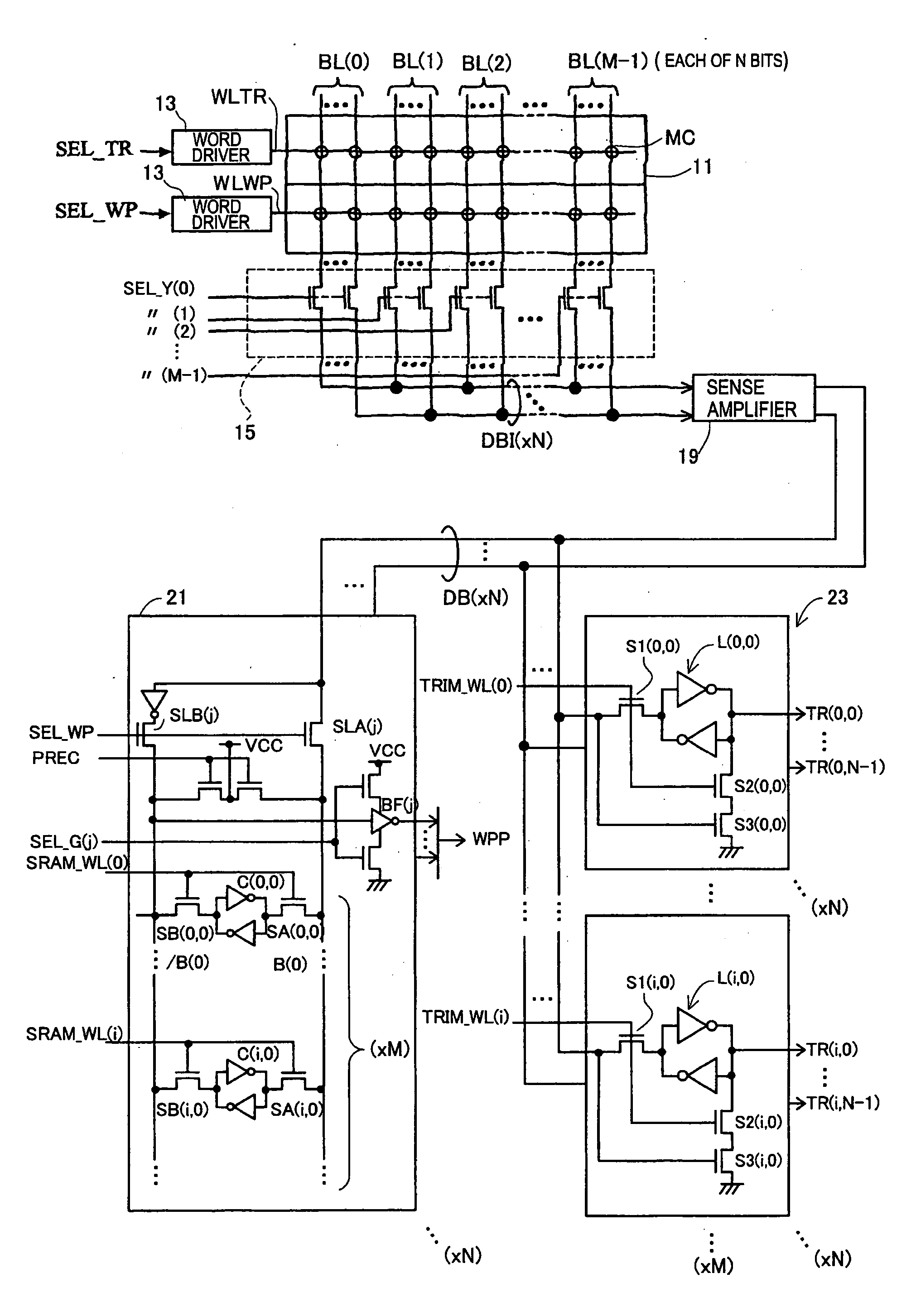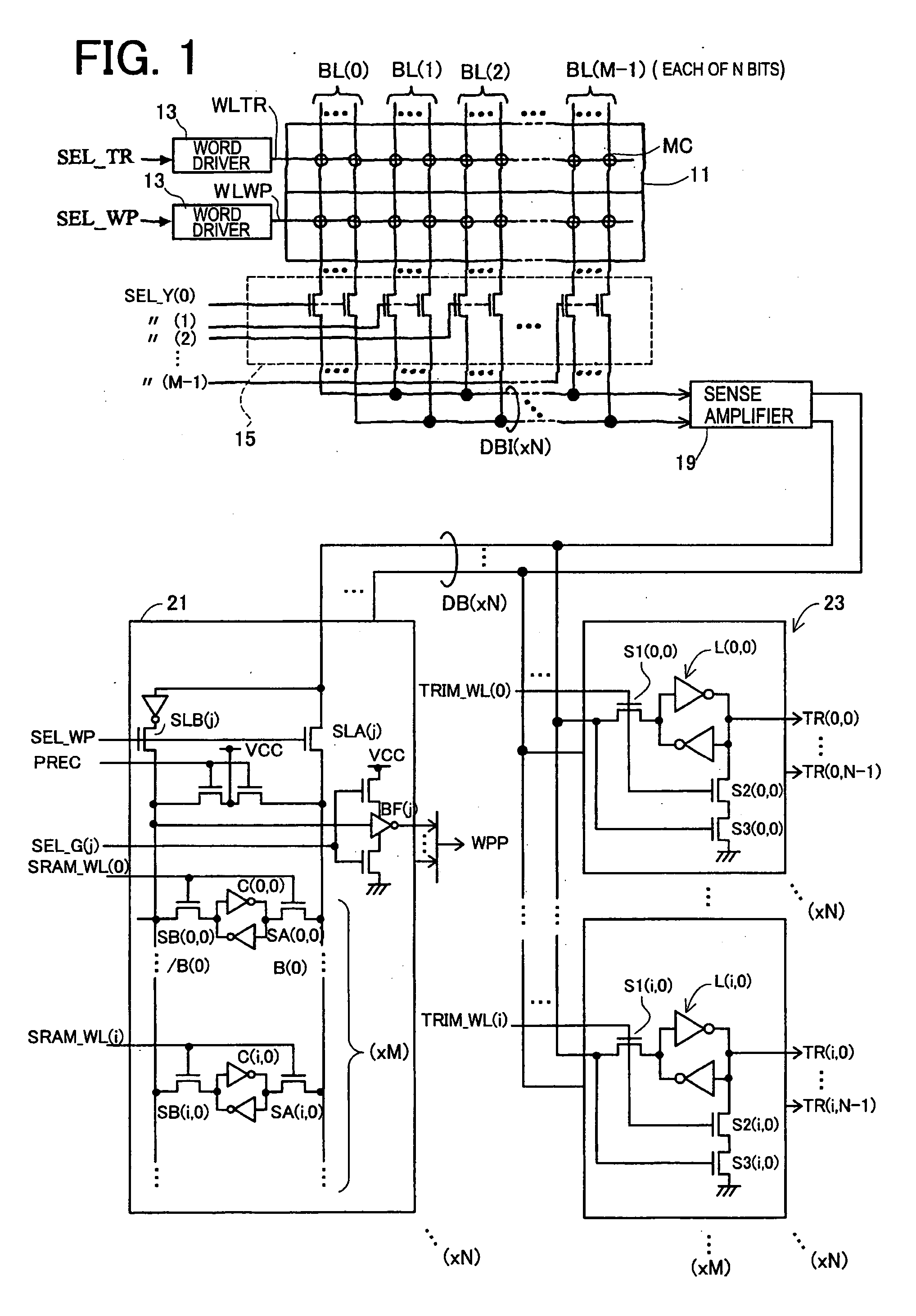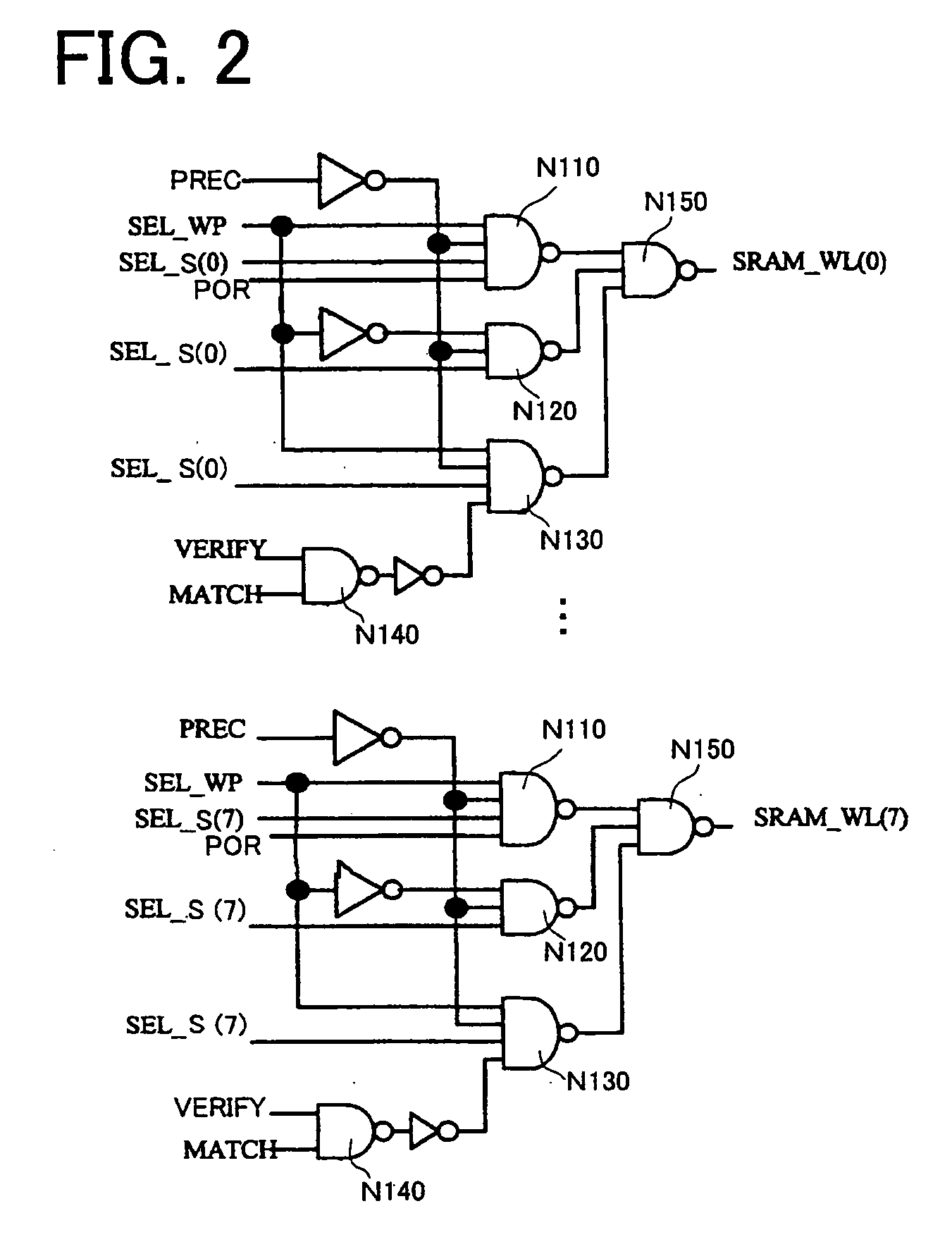Non-volatile memory device
a memory device and non-volatile technology, applied in the direction of data conversion, digital storage, generating/distributing signals, etc., can solve the problem of circuit size increasing, and achieve the effect of reducing the size of the region
- Summary
- Abstract
- Description
- Claims
- Application Information
AI Technical Summary
Benefits of technology
Problems solved by technology
Method used
Image
Examples
Embodiment Construction
[0029] Hereinafter, a detailed explanation will be made for the specific embodiments of the non-volatile memory device in the present invention by referring to FIGS. 1 to 8.
[0030] In a non-volatile memory device, operating conditions in operating circuits are set according to various types of operational information. The operational information is mainly classified into two types.
[0031] The first type of operational information is information set by vendors before shipment of the products. This information is necessary for allowing a non-volatile memory device to execute certain operations and includes information for adjusting bias voltage values which are used in various operations such as program operations, erase operations and read-out operations, information for adjusting the operation timing of various operations, information for adjusting the oscillation frequency of built-in oscillators, and redundant address information for redundantly saving defective memory cells. Thes...
PUM
 Login to View More
Login to View More Abstract
Description
Claims
Application Information
 Login to View More
Login to View More - R&D
- Intellectual Property
- Life Sciences
- Materials
- Tech Scout
- Unparalleled Data Quality
- Higher Quality Content
- 60% Fewer Hallucinations
Browse by: Latest US Patents, China's latest patents, Technical Efficacy Thesaurus, Application Domain, Technology Topic, Popular Technical Reports.
© 2025 PatSnap. All rights reserved.Legal|Privacy policy|Modern Slavery Act Transparency Statement|Sitemap|About US| Contact US: help@patsnap.com



